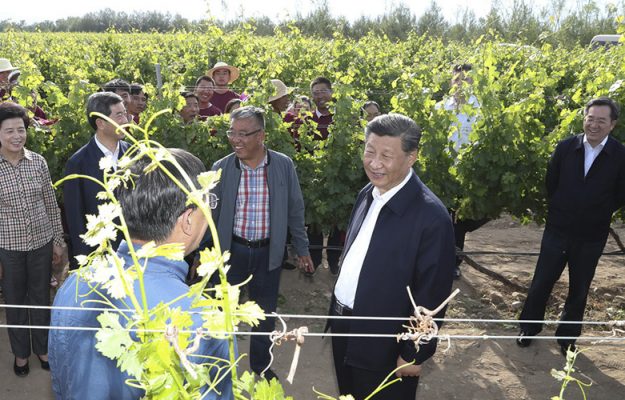From market target to reference on the world wine map: China discovers its wine vocation, and is ready to reveal it to the world, but the news should not worry the big producing countries, Italy and France first and foremost, on the contrary. A solid wine culture, as the example of the United States recounts, is fundamental for consumption to move out of the niche and embrace an ever-growing catchment area. A condition without which the Chinese market, beyond the growth in values, will hardly benefit from major changes. In addition, having an economic asset in viticulture, if not an important strategic one, means receiving more and more attention from politics and the government, as recounted by the constant interest in the affairs of Ningxia, the territory of reference of wine in China, of the President of the People’s Republic Xi Jinping.
As the China Daily portal recounts, it is precisely in Ningxia, in the North West of the country, on the slopes of Mount Helan, that Chinese wine has its roots, between 37 and 39 degrees north of latitude, i.e. in that climatic belt perfect for the cultivation of vines, with the mountain as a natural barrier to cold winds, and the Yellow River to ensure the right natural irrigation of the land. Moreover, grapes (probably not for wine) were already cultivated here during the Tang Dynasty (618-907 A.D.), as shown by the poems written by the Buddhist monk Guanxiu. The birth of the first truly great wine company, however, is much more recent, dating back to 1984, and today, after 36 years, there are 86 companies, with an area planted with vines of 38,000 hectares, where 36 different varieties are cultivated, for a total production of 100,000 tons of wine, with a market value of 3.25 billion dollars.
Quality is also growing, as demonstrated by the many successes achieved in international competitions and the presence of a Ningxia wine on the wine list of the restaurant at the United Nations headquarters in New York. It is not surprising, therefore, that Ningxia wines are now exported to more than 20 countries around the world, including France, Germany, UK, USA and Australia, through the Silk Road of the present day which, with a view to the future, could prove to be saving both the economy of Europe and the economy of China, including wine, in an exchange that, in the long run, who knows, will not finally make Italian wine exports fly, or rather run.
Copyright © 2000/2025
Contatti: info@winenews.it
Seguici anche su Twitter: @WineNewsIt
Seguici anche su Facebook: @winenewsit
Questo articolo è tratto dall'archivio di WineNews - Tutti i diritti riservati - Copyright © 2000/2025









































































































































































































